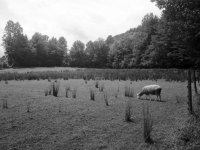Table Salt
Bristol Dry Lake Bed. Just outside of Amboy, a small railroad town founded in 1858 by salt miners. This looks like the snow and ice that coat the landscape of my native home in Vermont in the winter, I slip in my LL Bean boots…. This land is crusty with shades of lavender and aquamarine, secret holes with geode crystals seem to spiral deep into this ancient lake. The lake bed is 70 square miles. Sometimes in the rainy season the lake forms again. As I walk and crackle the ground below me, I think of this land as a sea, as an infinite space where I can see all of the edges of the earth. And in this dream too, there is the use value of this landscape, a commodity for capitalism, in a shaker in the domestic tableclothed table, on a cob of corn. Everything we use comes from the land, we really are the earth. I think of designing a salt label with Bristol Dry Lakebed on it. What if we knew where all of our commodities came from? Their routes and processes?
Fractals like tortoise shell hexagons, the sodium chloride, also known as hematite, is seven feet thick and is still harvested, processed and distributed by the National Chloride Company of America and Cargill Salt Company (second largest salt producing company in the US!). The salt is deep below the hard dense layers in what is called a crystal body.
I taste this place: the salt is mixed with clay and gypsum, the wind smells like ash and sheep. I know that the 40 freeway is not too far away, with its inter-continetal trucks. Who knows of this place? Are any of the trucks carrying salt to supermarkets?
Katie Bachler was our first HDTS Scout, and was in residence from 2012-2013.
The HDTS Scout Residency is dedicated to learning more about the people and places that make up our diverse and ever evolving community.
During Katie’s residency, visitors were invited to drop into the HDTS HQ, the Scout’s home base, to meet Katie, who could be found making maps, hosting conversations, and baking bread – in between her off-site adventures around town and out in the field.
Katie had a lot in store during her time here, including:
- a series of talks featuring local experts
- joining together to create a web of knowledge
- a research library and archive documenting the many spaces, places, plants, and people that make up this special region
- casual conversations with drop in visitors over tea
- site visits and field trips around town
Katie engaged the community by instigating map-making and rag-rug braiding workshops, the Scout’s Book Club, Art in the Environment classes for desert kids, casual conversations, site visits and field trips—all shared in her Scout’s blog, which serves as the foundation for her book.







































